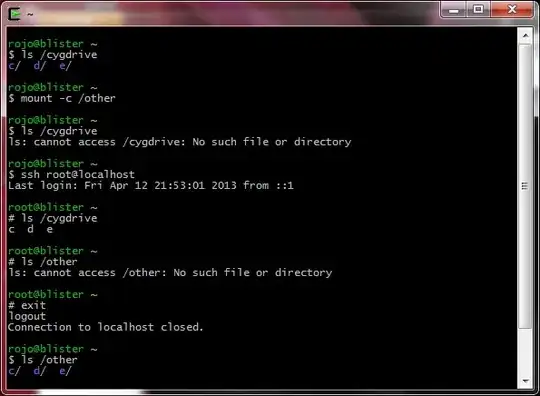I'm trying to give user2 access only to his home directory and full permissions on /cygdrive/e. I created a Data/ directory within his $home, added a bind directive in /etc/fstab (see below), and issued a mount -a.
I've got cygwin installed and sshd running (OpenSSH_6.1p1). When connecting with ChrootDirectory enabled in an sftp subsystem, ~/Data appears to have no contents. Even if I change the permissions for /cygdrive/e recursively to 0777, the result is the same. With ChrootDirectory active for that user in sshd_config, no contents are displayed.
However, connecting using the same user account without changing any permissions, the contents of ~/Data is fully populated after I comment out the Subsystem section at the bottom of sshd_config and restart sshd.
So how can I grant this cat god-mode permission on /cygdrive/e without giving him the ability to browse any other part of the filesystem? What am I missing?
The bottom of my sshd_config is as follows:
Subsystem sftp internal-sftp
Match User user2
ChrootDirectory /home/%u
X11Forwarding no
AllowTcpForwarding no
ForceCommand internal-sftp
The only line in /etc/fstab reads as follows:
/cygdrive/e /home/user2/Data none bind,posix=0,user
Currently, recursive ownership of /cygdrive/e belongs to Administrators:Users. The user2 Windows account is a member of Users as well as Administrators. All directories have a mask of 0755. All files have a mask of 0644.
I'm not crazy about user2 having admin rights to the machine, but I'll deal with that later. One problem at a time.
